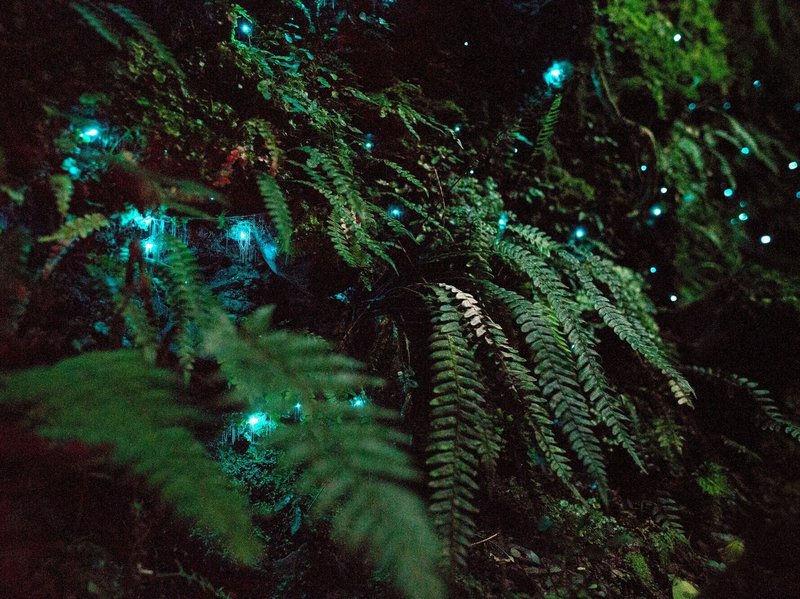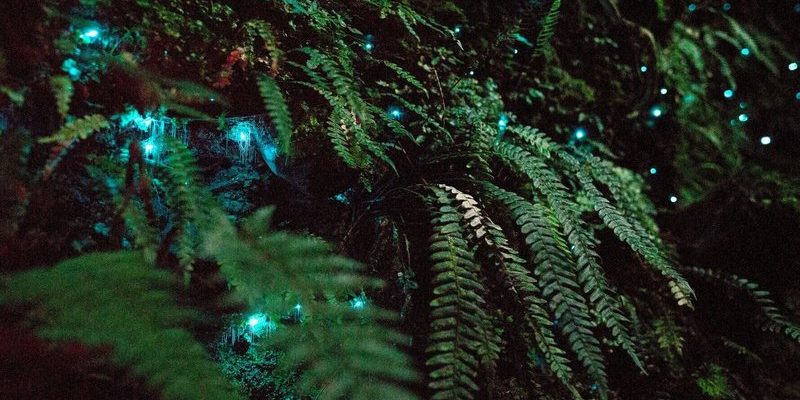
Keeping glow worms at home might sound like a fun idea, but it’s a bit more complex than just putting them in a jar and enjoying the show. Just like with any living creature, there’s a whole world of needs and specifics to consider. Let’s unpack what makes these little luminescent wonders tick and how you can replicate their natural habitat at home.
What Are Glow Worms and Where Do They Live?
When we talk about glow worms, we’re actually referring to the larvae of certain beetles, particularly in the *Lampyridae* family. In their larval stage, these creatures emit bioluminescent light to attract prey, which is usually small insects. It’s an evolutionary tactic that, quite frankly, is both clever and beautiful.
Glow worms thrive in damp, dark environments, which makes caves and forested areas their natural homes. They typically enjoy high humidity and a stable temperature, which helps them produce that stunning glow we all love. You might find them in regions like New Zealand, Australia, and parts of North America. Their habitats provide them not just with darkness, but with the moisture and food they need to grow.
The Basics of Captivity: What You Need to Know
Here’s the thing: keeping glow worms in captivity isn’t as easy as setting up a terrarium and calling it a day. You have to create an environment that closely mimics their natural habitat. This means controlling the temperature, humidity, and light exposure. They aren’t like pet goldfish; they require specific conditions to thrive.
First, you’ll need a container that provides good ventilation but still protects them from drafts. An aquarium might work, but it should be large enough for a few glow worms to coexist without feeling crowded. Remember, these little creatures thrive in darkness, so minimizing light exposure is key.
Next, let’s talk about moisture. Glow worms are like that friend who can’t stand dry weather—they need humidity around 70% to stay happy. Spraying the enclosure with water regularly or using a small humidifier can help maintain the right environment. Adding moss or damp substrate can also retain moisture while providing a place for them to hide.
Feeding Your Glow Worms: A Delicate Balance
Now that you’ve set the stage, let’s discuss what fuels these glowing larvae. In the wild, glow worms eat small insects like flies, and these critters will need a similar diet in captivity. You can feed them fruit flies or even specialized insect food you can find in pet stores.
It’s important to provide a steady food supply, but here’s where you have to be a bit careful. Overfeeding can lead to mold growth in their habitat, which can harm your glow worms. A good rule of thumb is to feed them small amounts every few days, keeping your eyes peeled for signs of excess food that can spoil.
Also, don’t forget to clean their habitat regularly! Keeping their space tidy will help prevent disease and keep your glow worms glowing bright.
Creating the Right Environment: Light and Temperature
You might be wondering how much light your glow worms can handle. The answer is: very little. While they need darkness to thrive, you can provide subtle indirect light during daytime hours, but keep it to a minimum. Too much light can stress them out, and nobody wants a stressed-out glow worm!
Temperature is another important factor. Glow worms typically do best in temperatures between 65°F and 75°F (18°C to 24°C). Keeping them within this range will ensure they stay comfortable and continue to grow well. If your room is too warm, think about using a fan or even moving them to a cooler spot in your house.
Problems You Might Face and How to Overcome Them
Caring for glow worms in captivity might sound simple, but it can come with its own set of challenges. You might notice they’re not glowing as brightly as they should, which can be a sign of stress or an unsatisfactory habitat. If you see this, it’s time to check their environment.
Look for issues like low humidity, improper temperature, or insufficient food. Sometimes, even a simple change in their setup can rejuvenate their glow. Patience is key here; it may take time and a few tweaks to get everything just right.
Another common issue is mold. Too much moisture can lead to mold growth, which can be harmful. Make sure you’re not overwatering and keep an eye on any food remnants that might spoil.
Ethical Considerations: Is It Right to Keep Glow Worms?
Before you commit to bringing glow worms into your home, let’s reflect on the ethics of keeping them in captivity. While it can be a thrilling experience, it’s essential to consider the impact on wild populations. Collecting glow worms from the wild can disrupt local ecosystems and is often illegal.
If you’re interested in this magical experience, consider purchasing glow worms from reputable breeders instead. This way, you can enjoy their beauty while supporting responsible practices that don’t harm natural habitats.
In short, yes, glow worms can be kept in captivity with a proper setup and care. This experience can be incredibly rewarding if you’re ready to put in the effort. Remember, it’s all about mimicking their natural habitat as closely as possible and ensuring they have what they need to thrive.
So, do you think you’re up for the challenge? If you decide to embark on this glow worm adventure, just remember to be patient, observant, and respectful of these beautiful creatures. Who knows? You may just find that their gentle glow illuminates more than just your living room—it could light up your understanding of nature and its wonders!

